Wide Forwards—fad or trend?
Dribblers have been the Must Have Thing in the Championship this summer. Are they back for good, or destined to be shunned once again?
Ali Maxwell
I love tactical analysis. I host The Athletic Football Tactics Podcast and I think the EFL Newsletter is the perfect place to focus on tactics amongst the 72. Now, for this particular piece of writing, that lens will be trained on the Championship. I prefer to write pieces that apply to all three divisions, but that’s difficult to do when drilling down into tactics, as the three EFL leagues all look and feel different. Over the course of the season, we’ll give love to League One and League Two. But we start here: Wide Forwards—fad or trend?
In the world of fashion, fads are shorter in length than trends. Fads can last as little as a couple of months or as long as a season. Trends endure beyond a season—they can last years.
Over the summer, many Championship teams have become obsessed with dribbly wide forwards. You know, those 1-v-1 specialists that get bums off seats, that delight and frustrate us in equal measure.
I really, really, really, really… <1 hour later> …really… <1 day later> …really hope that this is not a fad, but a bona fide trend. Let me explain.
The 3-5-2 Takeover
For the best part of three years, Championship football has been hostage to three-at-the-back (3atb) formations. This extreme shift in tactical landscape has made the product worse from an entertainment standpoint. At times, it’s felt like we’re watching the same match over and over again. And the spectacle is hardly invigorating.
Matches where a basic 3-5-2 shape is pitted against another tend to become a bit of a slog. Too congested. Too samey. All roads lead to the feet of the wing-backs or the heads/chests of the strikers. In the last two completed seasons, more than half of Championship teams played 3atb formations in the majority of their games, and almost all of them 3-5-2 rather than 3-4-3.
Let me be clear: it’s a completely understandable way to play in all three EFL leagues. Extra centre-back beef to defend your box and attack set-pieces; good central midfield coverage; two attackers to press and provide a penalty-box presence. Many teams have been successful playing that shape: last season, Sheffield United and Luton both won promotion doing so.
“More 3-5-2 = Fewer Goals” - Albert Einstein, probably
But variety is the spice of life. There is evidence to suggest that the more 3-5-2 is played, the fewer the goals. According to World Football’s second-tier goal records, 2021/22 and 2022/23 were the 3rd and 7th-lowest-scoring seasons since the year 2000. This doesn’t include 2020/21, which was the lowest-scoring season since 1974/75, as playing behind closed doors majorly impacted goalscoring.
Congestival
What about the human impact of this 3-5-2 Congestival?
The last few years have been a horror show for the winger, or wide forward…
Digression: I prefer to call them wide forwards rather than wingers because, in the main, these players now play ‘inverted’, naturally attacking inside, towards their stronger foot, rather than staying wide like old-school ‘chalk on the boots’ wingers. It is a different role with different responsibilities.
Fast, skilful, quickening the pulse of fans each time they receive the ball— we love wide forwards, right? Yes, we do.
But we all love pandas, too, and it didn’t stop them from nearing extinction.
The existential threat posed to Championship wide forwards can be seen in how many played at least 1,800 minutes (20 x 90 minutes) in wide forward roles (LW or RW), per Championship season:
19/20 - 32
20/21 - 34
From 2019-21, an average of 1.4 players per club played the equivalent of at least 20 90s in wide forward roles. That stacks up. A lovely average, I think you’ll agree.
21/22 - 21
In 21/22, the height of CongestFest, there was less than one wide forward per Championship club playing 20 90s—that’s not even half a season’s worth of minutes! 2021/22 was a disaster. Don’t ever talk to me about 2021/22.
22/23 - 28
Thankfully, in 22/23, we started trending upwards again, despite more than half of Championship teams still mostly playing 3atb systems.
Two teams led the charge: Burnley and Sunderland. Those two sides were among the highest scorers in the division and the most entertaining to watch. Their star attacking players? Anass Zaroury, Nathan Tella, Manuel Benson. Jack Clarke, Amad Diallo, Patrick Roberts. Wide forwards.
None of those names have a natural position in a 3-5-2, but they stood out as the most exciting and potent players in the division.
So, just as night follows day, the trend machine starts whirring again. Burnley and Sunderland showed the value, and others have followed.
To start the 2023/24 season, only three teams have played three-at-the-back systems in all three league games: Preston, Coventry and Swansea.
Wide forwards are back in vogue! Everyone wants a Manuel Benson!
The Benefits Of The Wide Forward
Now, it’s a good time to mention that these days, some Championship clubs play hybrid systems in which formations are different in and out of possession— a clear drip down from the elite clubs and managers at the very top of the game.
For example, Leicester: 4-3-3 out of possession, 3-2-5 in it. Southampton: 4-3-3 out of possession, 2-3-5 in it. So are they playing 3atb systems or not? It’s more blurry than ever before.
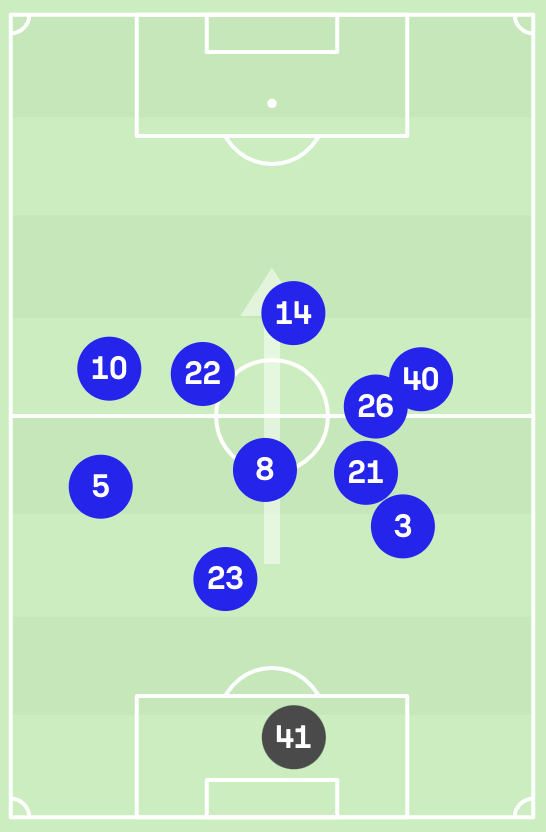
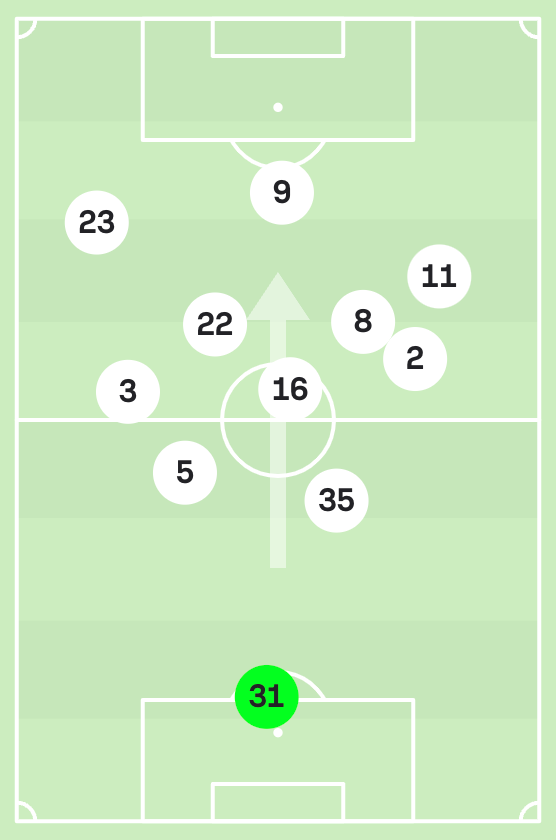
Both teams have their full-backs moving inside to the centre of the pitch during attacks: #21 Pereira for Leicester; #2 Walker-Peters and #3 Manning for Southampton.
Talking to Rio Ferdinand, Oleksandr Zinchenko explained some of the benefits of full-backs moving into the centre of the pitch rather than holding width:
“If the right winger is going to follow me, my job is done. Why? Because I will leave my winger — Martinelli, Sterling, Sané, Bukayo [Saka] — one-on-one, and if I give him 50 balls per game and create the space for him, my job is done. If he doesn't pass beyond his full-back or create an assist, this is not my problem— I did my job by attracting my opponent and creating space for him.”
Both of Zinchenko’s two teams in England (Manchester City and Arsenal) have wide forwards as a key part of their attack. Although Championship clubs can’t attract world-class talent of the calibre he mentions, many are still taking inspiration from this trend. Leicester and Southampton are in the fortunate position of having the talent already in the building (Nathan Tella, Samuel Edozie), or being able to buy it (Stephy Mavididi).
So why are these wide forwards so important to a technical, possession heavy team? Both Leicester and Southampton want to dominate the ball and build possession in central areas rather than down the sides. But once play reaches the final third, when defences close the space in the middle of the pitch, passing to the players out wide is often the only option— that’s where the space is.
Rather than having full-backs or wing-backs receiving those passes out wide, as would be the case in a standard 3-5-2, these teams want pacy attackers with killer 1-v-1 dribbling ability. They want players who can beat a man on the inside and get a shot off, or go outside and attempt a cutback to the striker or attacking midfielders.
In a 3-5-2 system, your wing-backs have to impact the game offensively. If they don’t, and if the opposition have a decent out of possession structure, you’re likely going to be stodgy as hell. But what has become clear, at Championship level, is that there isn’t an abundance of wing-backs available who can consistently impact games in attack.
That Tella Fella
Watching Southampton on Opening Night against Sheffield Wednesday, the importance of their wide forwards was evident. Saints were able to build possession into Wednesday’s half with no problem whatsoever. At that point, having sucked Wednesday’s midfield into the middle of the pitch with their narrow build-up, there was always a pass out wide to either Edozie (#23) or Tella (#11).
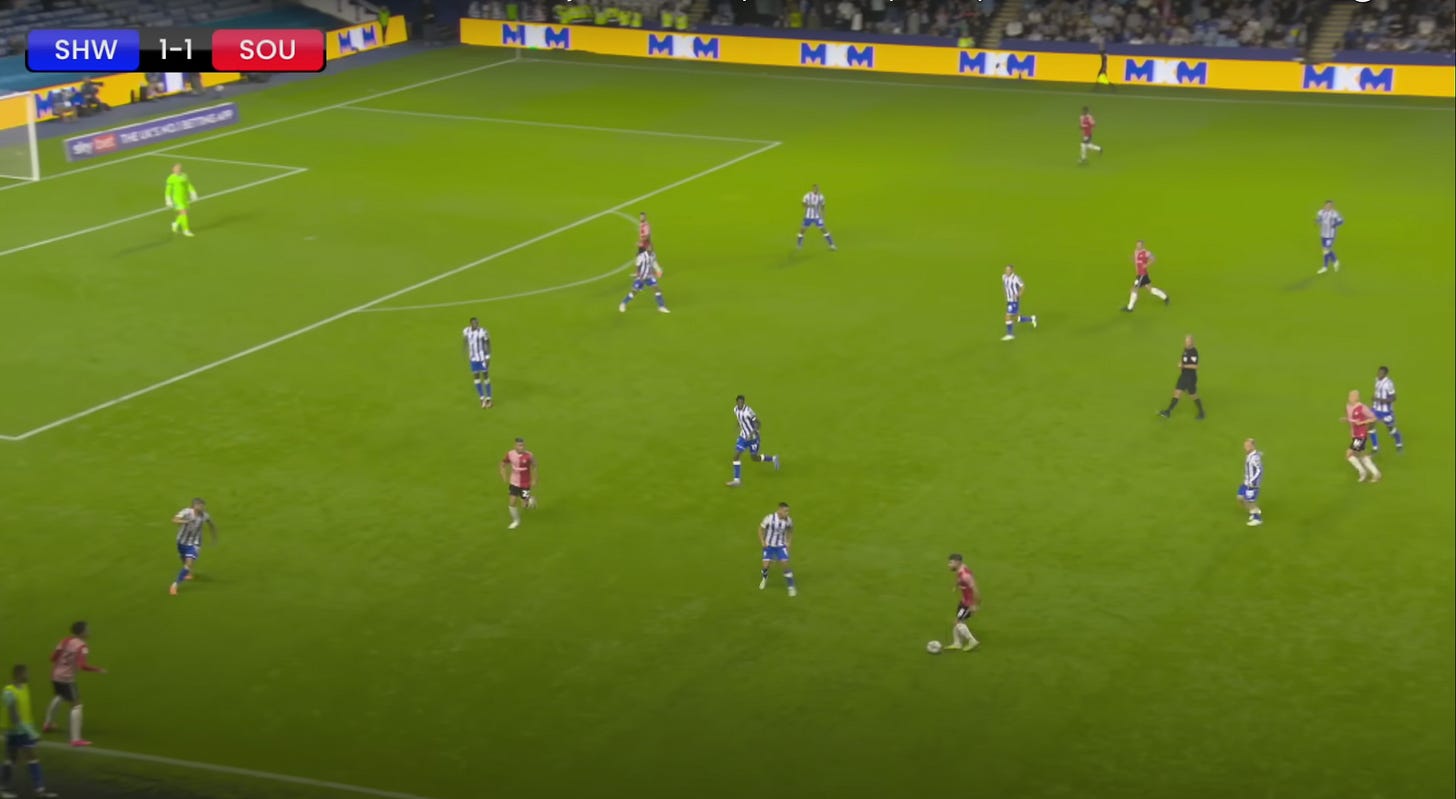
Playing with a back four, Sheffield Wednesday’s conundrum was made clear by two second-half attacks.
Here, James Ward-Prowse (who has since left Southampton for West Ham) makes a forward run. It’s difficult for defensive midfielders to track these runs all game, so Wednesday’s left-back, Akin Famewo, moves narrower to make sure there isn’t an easy ball into JWP. The consequence is that Tella has acres of space to receive the pass on the right wing, and dribble into the box. He cuts in and shoots wide.
Not long after that, Ward-Prowse makes a similar run. But this time, Famewo is wider, trying to get tighter to Tella. The space is there to pass to Ward-Prowse in the gap between centre-back and full-back, and he assists Che Adams for the winner. The gravity of Nathan Tella, a highly dangerous 1-v-1 specialist who was having a fantastic game, created the space.
For Famewo, it was a case of “damned if you do, damned if you don’t”.
There are other attacking benefits, too. It’s not just about having the best options to find out wide after a patient build-up reaches the final third and meets a narrow defence. It’s also about making the most of counter-attacking situations where opposition defences are back-pedalling, scrambling, not set in their shape. Having quick players in wide areas, generally vacated during opposition attacks, can be a deadly weapon.
Focusing on Leicester City and Southampton may make it seem like it’s just the relegated Premier League teams that are inverting their full-backs in order to feed dribbly wonderkids with exciting 1-v-1 opportunities, but other teams are taking a similar approach.
Birmingham City are trying to get the ball to Siriki Dembele in space out wide. Plymouth Argyle are doing the same with Bali Mumba and Morgan Whittaker, and Hull City have tried similar, with Jacob Greaves tucking in from left-back and Jason Lokilo holding the width on the left. Sunderland are still generating most of their attacks down the sides. Stoke City are loading up on this type of player.
Summer Influx
We need wide forwards!
However, as an unhappy consequence of 3-5-2 CongestFest, players like this are in low supply across the league. Teams have been focusing on centre-backs, wing-backs and physical #9s for multiple windows.
So, this summer, many Championship clubs have looked for wide forwards in the transfer market to deliver what they need. The problem is: they’re looking for players with pace, 1-v-1 dribbling ability, goal output and/or a wicked final ball. Oh, and also work rate and defensive awareness, because all outfielders need to contribute out of possession.
And, realistically, they want all of that for £2m at most. Ideally much less.
So, here are the players that clubs have turned to, all signed this summer:
Koji Miyoshi, Siriki Dembélé, Arnór Sigurðsson, Josh Bowler, Yakou Meite, Delano Burgzorg, Jason Lokilo, Omari Hutchinson, Stephy Mavididi, Sam Silvera, Morgan Rogers, Borja Sainz, Morgan Whittaker, Bali Mumba, Paul Smyth, Andre Green, Fred Onyedinma, Djeidi Gassama, Anthony Musaba, Juan Delgado, Andre Vidigal, Chiquinho, Giorgi Chakvetadze, Jeremy Sarmiento, Nikola Jojic.
Not all of these names fit the bill perfectly. Some will play slightly different roles, in different systems. Some may not even be the exact profile of the player we’re talking about.
What’s interesting is that a significant majority of those players were signed from abroad, and less than half are British players. The loosening of Brexit rules in the transfer market has had a big impact— but is it also the case that British players are less likely to fit this profile? Or are there players who fit the profile, but have been hoovered up by Premier League clubs at a young age and given £10k a week to play in PL2? Perhaps we will see a lot of wide forwards join on loan from Premier League clubs in the next week.
The impact on player development within Championship academies will be interesting. Full-backs used to need to be strong defenders, first and foremost. Then they needed to be athletic, good at dribbling and crossing. Now, having the technical ability of a central midfielder (as seen with Pereira, Walker-Peters, Manning) in order to be a part of 2-3 or 3-2 buildups (see: Southampton and Leicester) could be the most desirable skillset for a full-back. James Garner played right back for England under-21s this summer, tucking inside to create the 1-v-1 situations for Noni Madueke on the right wing. Thomas Partey has been playing in a similar role for Arsenal to start the season. Will we see academy midfield talent breaking through in full-back positions?
Will this be a fad or a trend?
It’s easy to see why Championship teams are leaning towards going down this route and leaving 3atb formations behind. What about those that have stuck with 3atb systems: Preston, Swansea and Coventry. Their strategies will be less ‘standard’ than in previous season, could they benefit from that fact? Or will they be left behind by new-found solutions to playing against 3-5-2?
One crucial factor is how brave managers are willing to be. The nature of the wide forward role we are discussing is high risk, high reward. Match-winning displays, sure. But plenty of frustrating afternoons and evenings, where the dribbles aren’t successful, the shooting or crossing wayward. It is hard to dribble past players and make things happen at speed, while also fulfilling important responsibilities out of possession, like pressing high and tracking back.
You, probably, at some point in your football-watching life:
“If only Dribbly Wide-Forward had an end product, he’d be playing for England!”
Will an under-pressure manager, brought back down to earth during a poor run, turn to a more ‘solid approach’— put an extra body in the back line and go 3-5-2? I wouldn’t be surprised.
From a neutral’s perspective, I’m hoping it’s a trend rather than a fad. The Championship season has started with 2.81 goals per game, a huge leap from last season albeit in a tiny sample size. We’ve seen André Vidigal, Siriki Dembele, Jonathan Rowe, Bali Mumba, Stephy Mavididi and Nathan Tella lighting up games. There is more exciting, attacking football being played, with invention and 1-v-1 individual quality at the heart of it.
If you think I’ve broken the record for uses of the phrase ‘1-v-1’ in this piece, it’s not just me! We finish with a selection of quotes about Championship summer signings, either from the manager or the player themselves.
Enzo Maresca on Stephy Mavididi after his winning goal vs Huddersfield:
“The reason why we brought him to the club was exactly for that today; good in one-v-ones who scores goals and give assists.”
Xisco Muñoz on Anthony Musaba:
“Anthony has big capacity with a lot of ability one-against-one, and he is a player who learns and will give everything.”
Liam Rosenior on Jason Lokilo:
“I’m really excited about Jason. He fits into our style of play as a winger who plays off his left foot, can play both sides, combine and go one-for-one. He’s quick, aggressive in the final third, likes to get shots off and crosses, and works hard for the team.”
Kieran McKenna on Omari Hutchinson:
“He is a wide player who can give us different options and is direct, can attack and test the opposition in one-v-ones and has good pace”
Alex Neil on Chiquinho:
“He’s quick, he’s dynamic, he’s direct.”
Borja Sainz:
“As a player, I like the one-on-ones. I’m very vertical, I like to score goals and also help in defence.”
Djeidi Gassama:
“I like to score goals, take risks and show some skills.”
Let’s Get Dribbly!



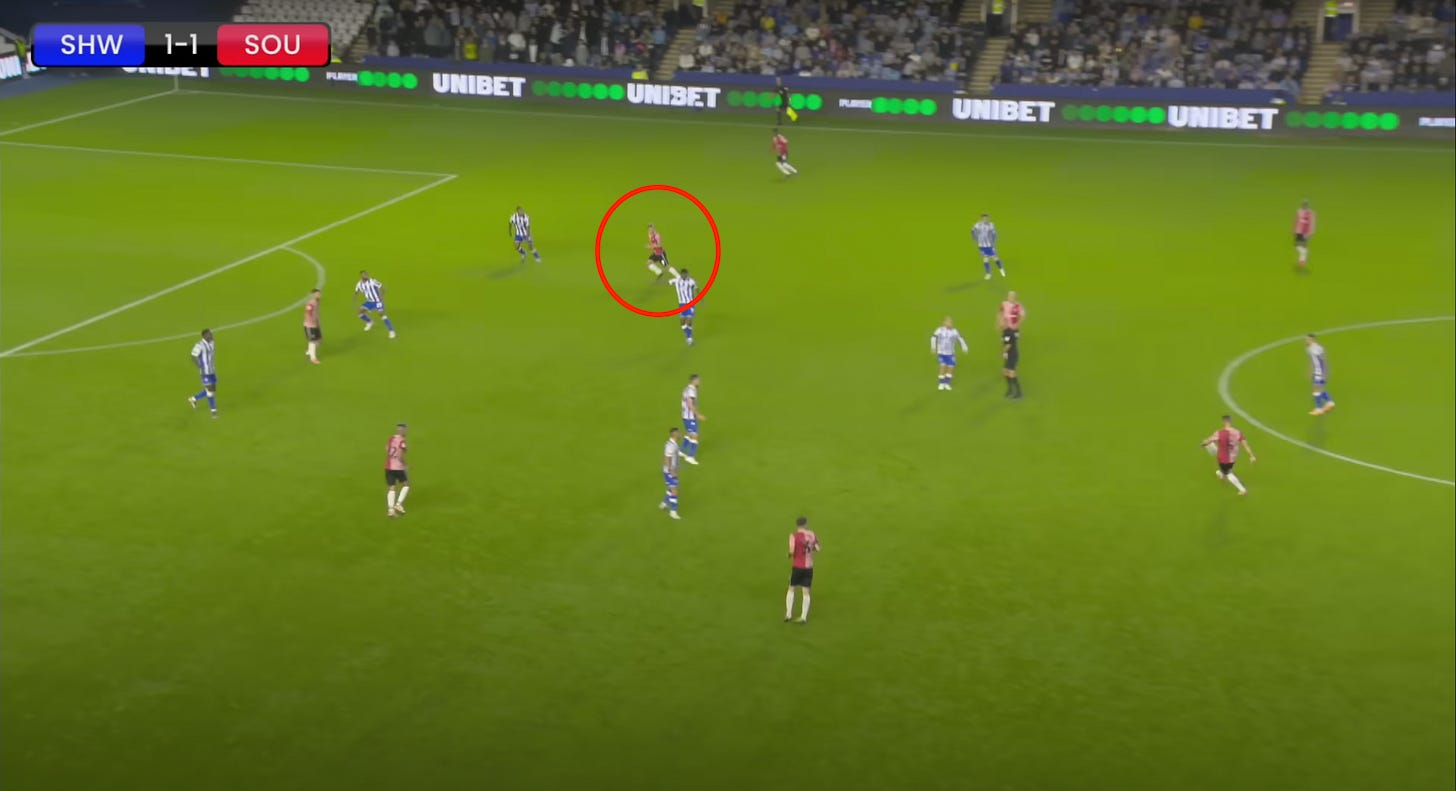
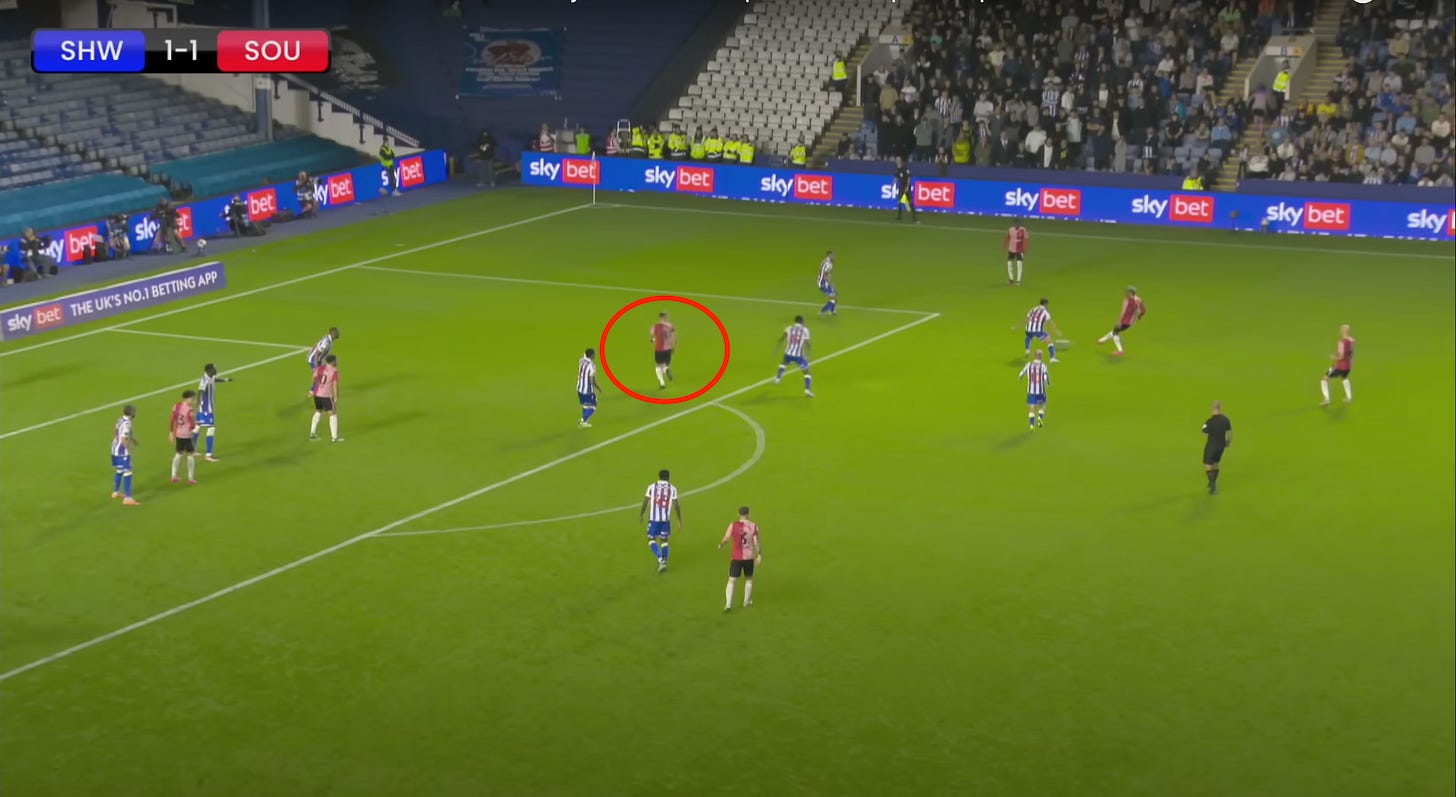
Fantastic work, really loved reading that!
With this type of player seemingly so much more in demand this summer, surprised we haven't seen more teams in for Diangana. He clearly needs a fresh start away from Albion, but definitely ticks a lot of these boxes, especially when in form